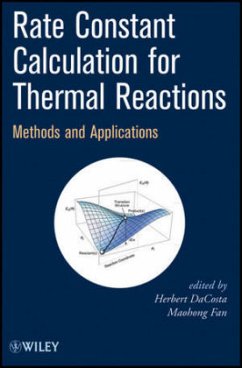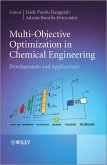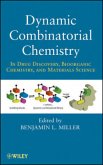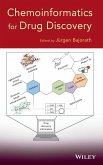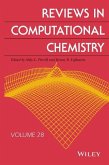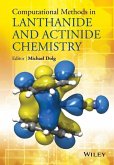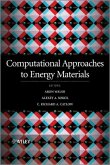Herbert DaCostaMethods and Applications
Rate Constant Calculation for Thermal Reactions
Methods and Applications
Herausgegeben von Fan, Maohong
Herbert DaCostaMethods and Applications
Rate Constant Calculation for Thermal Reactions
Methods and Applications
Herausgegeben von Fan, Maohong
- Gebundenes Buch
- Merkliste
- Auf die Merkliste
- Bewerten Bewerten
- Teilen
- Produkt teilen
- Produkterinnerung
- Produkterinnerung
Providing an overview of the latest computational approaches to estimate rate constants for thermal reactions, this book addresses the theories behind various first-principle and approximation methods that have emerged in the last twenty years with validation examples. It presents in-depth applications of those theories to a wide range of basic and applied research areas. When doing modeling and simulation of chemical reactions (as in many other cases), one often has to compromise between higher-accuracy/higher-precision approaches (which are usually time-consuming) and…mehr
Andere Kunden interessierten sich auch für
![Multiscale Modeling of Particle Interactions Multiscale Modeling of Particle Interactions]() Michael KingMultiscale Modeling of Particle Interactions195,99 €
Michael KingMultiscale Modeling of Particle Interactions195,99 €![Multi-Objective Optimization in Chemical Engineering Multi-Objective Optimization in Chemical Engineering]() Multi-Objective Optimization in Chemical Engineering253,99 €
Multi-Objective Optimization in Chemical Engineering253,99 €![Dynamic Combinatorial Chemistry Dynamic Combinatorial Chemistry]() Dynamic Combinatorial Chemistry128,99 €
Dynamic Combinatorial Chemistry128,99 €![Chemoinformatics Chemoinformatics]() Jürgen BajorathChemoinformatics158,99 €
Jürgen BajorathChemoinformatics158,99 €![Reviews in Computational Chemistry, Volume 28 Reviews in Computational Chemistry, Volume 28]() Reviews in Computational Chemistry, Volume 28242,99 €
Reviews in Computational Chemistry, Volume 28242,99 €![Computational Methods in Lanthanide and Actinide Chemistry Computational Methods in Lanthanide and Actinide Chemistry]() Computational Methods in Lanthanide and Actinide Chemistry262,99 €
Computational Methods in Lanthanide and Actinide Chemistry262,99 €![Computational Approaches to Energy Materials Computational Approaches to Energy Materials]() Richard CatlowComputational Approaches to Energy Materials194,99 €
Richard CatlowComputational Approaches to Energy Materials194,99 €-
-
-
Providing an overview of the latest computational approaches to estimate rate constants for thermal reactions, this book addresses the theories behind various first-principle and approximation methods that have emerged in the last twenty years with validation examples. It presents in-depth applications of those theories to a wide range of basic and applied research areas. When doing modeling and simulation of chemical reactions (as in many other cases), one often has to compromise between higher-accuracy/higher-precision approaches (which are usually time-consuming) and approximate/lower-precision approaches (which often has the advantage of speed in providing results). This book covers both approaches. It is augmented by a wide-range of applications of the above methods to fuel combustion, unimolecular and bimolecular reactions, isomerization, polymerization, and to emission control of nitrogen oxides. An excellent resource for academics and industry members in physical chemistry, chemical engineering, and related fields.
Hinweis: Dieser Artikel kann nur an eine deutsche Lieferadresse ausgeliefert werden.
Hinweis: Dieser Artikel kann nur an eine deutsche Lieferadresse ausgeliefert werden.
Produktdetails
- Produktdetails
- Verlag: Wiley & Sons
- 1. Auflage
- Seitenzahl: 360
- Erscheinungstermin: 18. Januar 2012
- Englisch
- Abmessung: 244mm x 164mm x 27mm
- Gewicht: 632g
- ISBN-13: 9780470582305
- ISBN-10: 0470582308
- Artikelnr.: 33379897
- Herstellerkennzeichnung
- Libri GmbH
- Europaallee 1
- 36244 Bad Hersfeld
- gpsr@libri.de
- Verlag: Wiley & Sons
- 1. Auflage
- Seitenzahl: 360
- Erscheinungstermin: 18. Januar 2012
- Englisch
- Abmessung: 244mm x 164mm x 27mm
- Gewicht: 632g
- ISBN-13: 9780470582305
- ISBN-10: 0470582308
- Artikelnr.: 33379897
- Herstellerkennzeichnung
- Libri GmbH
- Europaallee 1
- 36244 Bad Hersfeld
- gpsr@libri.de
Herbert DaCosta is currently a principal consultant at Chem-Innovations LLC and an adjunct professor of chemistry at Illinois Central College. His research interests include environmental catalysis and clean energy, nanomaterial design and synthesis, computational chemistry, and kinetics. Maohong Fan is Associate Professor at the University of Wyoming and an adjunct associate professor at the Georgia Institute of Technology. His research interests include nanomaterial synthesis and application, green processes for chemical production, and new approaches to clean energy generation.
PREFACE xiii Herbert DaCosta and Maohong Fan CONTRIBUTORS xv PART I METHODS 1 1. Overview of Thermochemistry and Its Application to Reaction Kinetics 3 Elke Goos and Alexander Burcat 1.1. History of Thermochemistry 3 1.2. Thermochemical Properties 5 1.3. Consequences of Thermodynamic Laws to Chemical Kinetics 8 1.4. How to Get Thermochemical Values? 10 1.5. Accuracy of Thermochemical Values 16 1.6. Representation of Thermochemical Data for Use in Engineering Applications 21 1.7. Thermochemical Databases 26 1.8. Conclusion 27 2. Calculation of Kinetic Data Using Computational Methods 33 Fernando P. Cossío 2.1. Introduction 33 2.2. Stationary Points and Potential Energy Hypersurfaces 34 2.3. Calculation of Reaction and Activation Energies: Levels of Theory and Solvent Effects 38 2.4. Estimate of Relative Free Energies: Standard States 47 2.5. Theoretical Approximate Kinetic Constants and Treatment of Data 50 2.6. Selected Examples 51 2.7. Conclusions and Outlook 61 3. Quantum Instanton Evaluation of the Kinetic Isotope Effects and of the Temperature Dependence of the Rate Constant 67 Jiøí Vanícek 3.1. Introduction 67 3.2. Arrhenius Equation, Transition State Theory, and the Wigner Tunneling Correction 68 3.3. Quantum Instanton Approximation for the Rate Constant 69 3.4. Kinetic Isotope Effects 71 3.5. Temperature Dependence of the Rate Constant 73 3.6. Path Integral Representation of Relevant Quantities 75 3.7. Examples 81 3.8. Summary 88 4. Activation Energies in Computational Chemistry-A Case Study 93 Michael Busch, Elisabet Ahlberg and Itai Panas 4.1. Introduction 93 4.2. Context and Theoretical Background 95 4.3. Computational Details 99 4.4. Recent Advances and New Results 99 4.5. Concluding Remarks 107 5. No Barrier Theory-A New Approach to Calculating Rate Constants in Solution 113 J. Peter Guthrie 5.1. Introduction 113 5.2. The Idea Behind No Barrier Theory 114 5.3. How to Define the Surface and Find the Transition State 118 5.4. What is Needed for a Calculation? 124 5.5. Applications to Date 125 5.6. Future Prospects for NBT 140 PART II MINIREVIEWS AND APPLICATIONS 147 6. Quantum Chemical and Rate Constant Calculations of Thermal Isomerizations, Decompositions, and Ring Expansions of Organic Ring Compounds, Its Significance to Cohbusion Kinetics 149 Faina Dubnikova and Assa Lifshitz 6.1. Prologue 149 6.2. Small Organic Ring Compounds 152 6.3. Pyrrole and Indole 156 6.4. Dihydrofurans and Dihydrobenzofurans 160 6.5. Naphthyl Acetylene-Naphthyl Ethylene 166 6.6. Ring Expansion Processes 168 6.7. Benzoxazole-Benzisoxazoles 173 6.8. Conclusion 181 7. Challenges in the Computation of Rate Constants for Lignin Model Compounds 191 Ariana Beste and A.C. Buchanan, III 7.1. Lignin: A Renewable Source of Fuels and Chemicals 191 7.2. Mechanistic Study of Lignin Model Compounds 196 7.3. Computational Investigation of the Pyrolysis of ß-O-4 Model Compounds 201 7.4. Case Studies: Substituent Effects on Reactions of Phenethyl Phenyl Ethers 214 7.5. Conclusions and Outlook 232 8. Quantum Chemistry Study on the Pyrolysis Mechanisms of Coal-Related Model Compounds 239 Baojun Wang, Riguang Zhang and Lixia Ling 8.1. Introduction to the Application of Quantum Chemistry Calculation to Investigation on Models of Coal Structure 239 8.2. The Model for Coal Structure and Calculation Methods 240 8.3. The Pyrolysis Mechanisms of Coal-Related Model Compounds 243 8.4. Conclusion 276 9. Ab Initio Kinetic Modeling of Free-Radical Polymerization 283 Michelle L. Coote 9.1. Introduction 283 9.2. Ab Initio Kinetic Modeling 287 9.3. Quantum Chemical Methodology 291 9.4. Case Study: RAFT Polymerization 296 9.5. Outlook 300 10. Intermolecular Electron Transfer Reactivity for Organic Compounds Studied Using Marcus Cross-Rate Theory 305 Stephen F. Nelsen and Jack R. Pladziewicz 10.1. Introduction 305 10.2. Determination of
G
ii (fit) Values 307 10.3. Why is the Success of Cross-Rate Theory Surprising? 309 10.4. Major Factors Determining Intrinsic Reactivities of Hydrazine Couples 310 10.5. Nonhydrazine Couples 315 10.6. Comparison of D
G
ii (fit) with D
G
ii (self) Values 318 10.7. Estimation of Hab from Experimental Exchange Rate Constants and DFT-Computed l 320 10.8. Comparison with Gas-Phase Reactions 333 10.9. Conclusions 333 References 334 INDEX 337
G
ii (fit) Values 307 10.3. Why is the Success of Cross-Rate Theory Surprising? 309 10.4. Major Factors Determining Intrinsic Reactivities of Hydrazine Couples 310 10.5. Nonhydrazine Couples 315 10.6. Comparison of D
G
ii (fit) with D
G
ii (self) Values 318 10.7. Estimation of Hab from Experimental Exchange Rate Constants and DFT-Computed l 320 10.8. Comparison with Gas-Phase Reactions 333 10.9. Conclusions 333 References 334 INDEX 337
PREFACE xiii Herbert DaCosta and Maohong Fan CONTRIBUTORS xv PART I METHODS 1 1. Overview of Thermochemistry and Its Application to Reaction Kinetics 3 Elke Goos and Alexander Burcat 1.1. History of Thermochemistry 3 1.2. Thermochemical Properties 5 1.3. Consequences of Thermodynamic Laws to Chemical Kinetics 8 1.4. How to Get Thermochemical Values? 10 1.5. Accuracy of Thermochemical Values 16 1.6. Representation of Thermochemical Data for Use in Engineering Applications 21 1.7. Thermochemical Databases 26 1.8. Conclusion 27 2. Calculation of Kinetic Data Using Computational Methods 33 Fernando P. Cossío 2.1. Introduction 33 2.2. Stationary Points and Potential Energy Hypersurfaces 34 2.3. Calculation of Reaction and Activation Energies: Levels of Theory and Solvent Effects 38 2.4. Estimate of Relative Free Energies: Standard States 47 2.5. Theoretical Approximate Kinetic Constants and Treatment of Data 50 2.6. Selected Examples 51 2.7. Conclusions and Outlook 61 3. Quantum Instanton Evaluation of the Kinetic Isotope Effects and of the Temperature Dependence of the Rate Constant 67 Jiøí Vanícek 3.1. Introduction 67 3.2. Arrhenius Equation, Transition State Theory, and the Wigner Tunneling Correction 68 3.3. Quantum Instanton Approximation for the Rate Constant 69 3.4. Kinetic Isotope Effects 71 3.5. Temperature Dependence of the Rate Constant 73 3.6. Path Integral Representation of Relevant Quantities 75 3.7. Examples 81 3.8. Summary 88 4. Activation Energies in Computational Chemistry-A Case Study 93 Michael Busch, Elisabet Ahlberg and Itai Panas 4.1. Introduction 93 4.2. Context and Theoretical Background 95 4.3. Computational Details 99 4.4. Recent Advances and New Results 99 4.5. Concluding Remarks 107 5. No Barrier Theory-A New Approach to Calculating Rate Constants in Solution 113 J. Peter Guthrie 5.1. Introduction 113 5.2. The Idea Behind No Barrier Theory 114 5.3. How to Define the Surface and Find the Transition State 118 5.4. What is Needed for a Calculation? 124 5.5. Applications to Date 125 5.6. Future Prospects for NBT 140 PART II MINIREVIEWS AND APPLICATIONS 147 6. Quantum Chemical and Rate Constant Calculations of Thermal Isomerizations, Decompositions, and Ring Expansions of Organic Ring Compounds, Its Significance to Cohbusion Kinetics 149 Faina Dubnikova and Assa Lifshitz 6.1. Prologue 149 6.2. Small Organic Ring Compounds 152 6.3. Pyrrole and Indole 156 6.4. Dihydrofurans and Dihydrobenzofurans 160 6.5. Naphthyl Acetylene-Naphthyl Ethylene 166 6.6. Ring Expansion Processes 168 6.7. Benzoxazole-Benzisoxazoles 173 6.8. Conclusion 181 7. Challenges in the Computation of Rate Constants for Lignin Model Compounds 191 Ariana Beste and A.C. Buchanan, III 7.1. Lignin: A Renewable Source of Fuels and Chemicals 191 7.2. Mechanistic Study of Lignin Model Compounds 196 7.3. Computational Investigation of the Pyrolysis of ß-O-4 Model Compounds 201 7.4. Case Studies: Substituent Effects on Reactions of Phenethyl Phenyl Ethers 214 7.5. Conclusions and Outlook 232 8. Quantum Chemistry Study on the Pyrolysis Mechanisms of Coal-Related Model Compounds 239 Baojun Wang, Riguang Zhang and Lixia Ling 8.1. Introduction to the Application of Quantum Chemistry Calculation to Investigation on Models of Coal Structure 239 8.2. The Model for Coal Structure and Calculation Methods 240 8.3. The Pyrolysis Mechanisms of Coal-Related Model Compounds 243 8.4. Conclusion 276 9. Ab Initio Kinetic Modeling of Free-Radical Polymerization 283 Michelle L. Coote 9.1. Introduction 283 9.2. Ab Initio Kinetic Modeling 287 9.3. Quantum Chemical Methodology 291 9.4. Case Study: RAFT Polymerization 296 9.5. Outlook 300 10. Intermolecular Electron Transfer Reactivity for Organic Compounds Studied Using Marcus Cross-Rate Theory 305 Stephen F. Nelsen and Jack R. Pladziewicz 10.1. Introduction 305 10.2. Determination of
G
ii (fit) Values 307 10.3. Why is the Success of Cross-Rate Theory Surprising? 309 10.4. Major Factors Determining Intrinsic Reactivities of Hydrazine Couples 310 10.5. Nonhydrazine Couples 315 10.6. Comparison of D
G
ii (fit) with D
G
ii (self) Values 318 10.7. Estimation of Hab from Experimental Exchange Rate Constants and DFT-Computed l 320 10.8. Comparison with Gas-Phase Reactions 333 10.9. Conclusions 333 References 334 INDEX 337
G
ii (fit) Values 307 10.3. Why is the Success of Cross-Rate Theory Surprising? 309 10.4. Major Factors Determining Intrinsic Reactivities of Hydrazine Couples 310 10.5. Nonhydrazine Couples 315 10.6. Comparison of D
G
ii (fit) with D
G
ii (self) Values 318 10.7. Estimation of Hab from Experimental Exchange Rate Constants and DFT-Computed l 320 10.8. Comparison with Gas-Phase Reactions 333 10.9. Conclusions 333 References 334 INDEX 337

